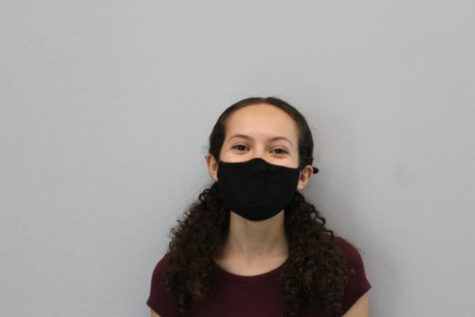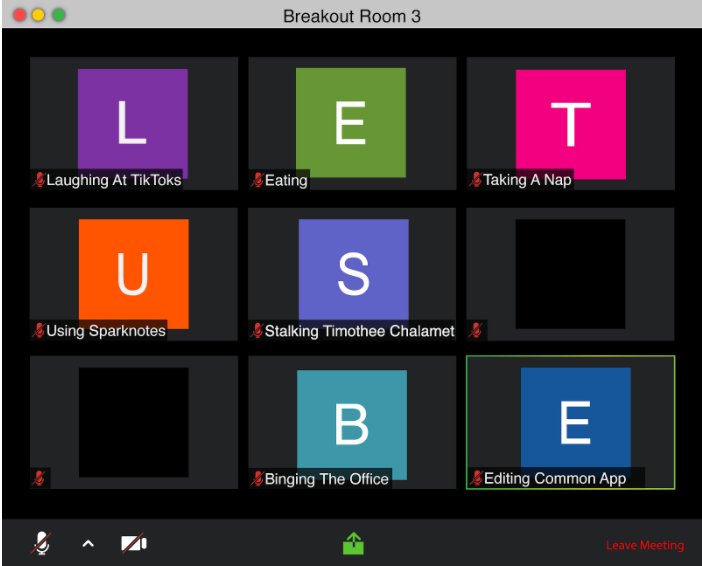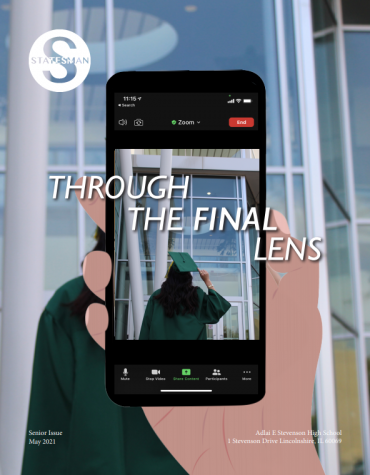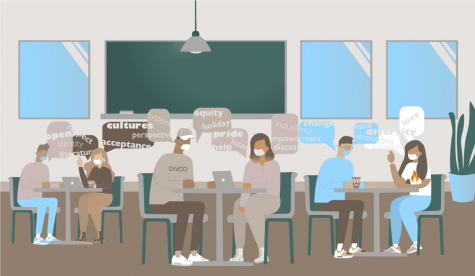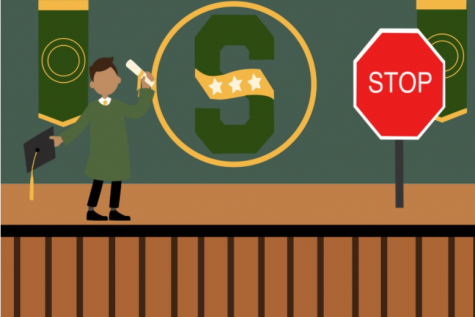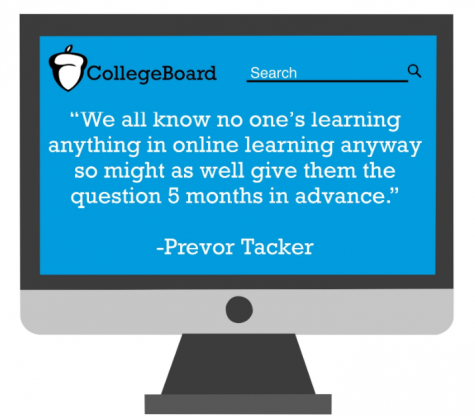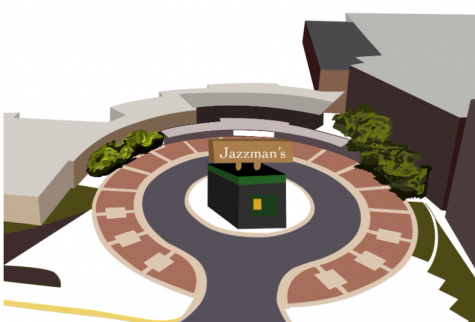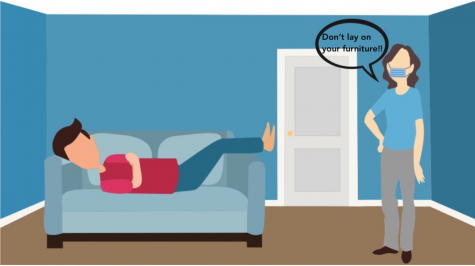Cameras Off, Brains On
As students share their love of breakout rooms, teachers start to have reservations
It’s Tuesday at 10:30 am and Kate Meyers ’23 is eating her third bag of chips in the hour as music blares in the background. Her laptop is open to Zoom, but her camera and microphone are off. Most teachers wouldn’t tolerate this behavior, but Meyers doesn’t feel she should worry; she’s in a breakout room, and the classmates in her group don’t seem to mind. In fact, with the teacher absent, all of their cameras are turned off too, and Meyers can’t imagine they’re doing anything much different.
Because creating typical, in-person table groups has become impossible due to E-learning, teachers have turned to Zoom breakout rooms as an alternative form of student collaboration. As Stevenson students work with their peers in these small groups, some have reported that they even prefer Zoom breakout rooms over talking to their classmates in person.
The Zoom breakout room function allows teachers to send students to a separate, smaller Zoom room within the class so that they can collaborate on assignments. According to students, the process often leads to either silence or amusing off-topic rants with their classmates, regardless, it creates an environment that allows them to flourish.
“My favorite part of the day is when we’re in breakout rooms,” Kate Meyers said. “Since I’ve given up on awkwardly trying to finish math problems with three strangers, and now turn off my camera and microphone immediately, it’s been great! I may be two weeks behind in math because nobody in my group ever answers me, but now I can enjoy a valuable bit of silence.”
While Meyers said that breakout rooms give her peace and solitude, others have found different benefits. According to Zach Baynes ’21, whenever his teachers assign him to breakout rooms, he uses the time to take naps, watch Netflix or play Cool Math Games.
“Even though I’m not exactly doing the assignment, I still think I’m being productive in my own way,” Baynes said. “I’ve had enough time to completely rewatch The Office!”
Although Meyers sees the breakout room work time as constructive, faculty members have expressed some concerns. Chemistry teacher Laurence Radcliffe said his opinions on breakout rooms have started to shift.
Radcliffe has been using breakout rooms to allow students to teach each other the class’s content. The students spend most of their class time completing worksheets on material they haven’t learned yet, but they have their breakout rooms to assist them.
Radcliffe said the students seemed to enjoy peer teaching so much in previous years that he had to pass it on to the Zoom curriculum. However, he has recently begun to worry that the students aren’t always working when they are in breakout rooms.
“The students are acting somewhat suspicious,” Radcliffe said. “When I go into rooms to check on them, their cameras are off or they quickly change the topic as soon as they see me.”
Still, Radcliffe continues to assign students to breakout rooms because, despite his reservations, he doesn’t know how else to fill up class time. Among other teachers at Stevenson, he is not alone. According to the National High School Zoom Observatory, 35% of all class time takes place in breakout rooms, and students want even more.
“I’m hoping for full-time breakout room classes in the future,” Baynes said. “Some people may call them unproductive, but the sheer range from unique conversations to complete silence makes it almost feel like we’re back in our in-person assigned table groups. If teachers truly want to replicate in-person learning, they’re doing a darn good job of it with these breakout rooms.”
